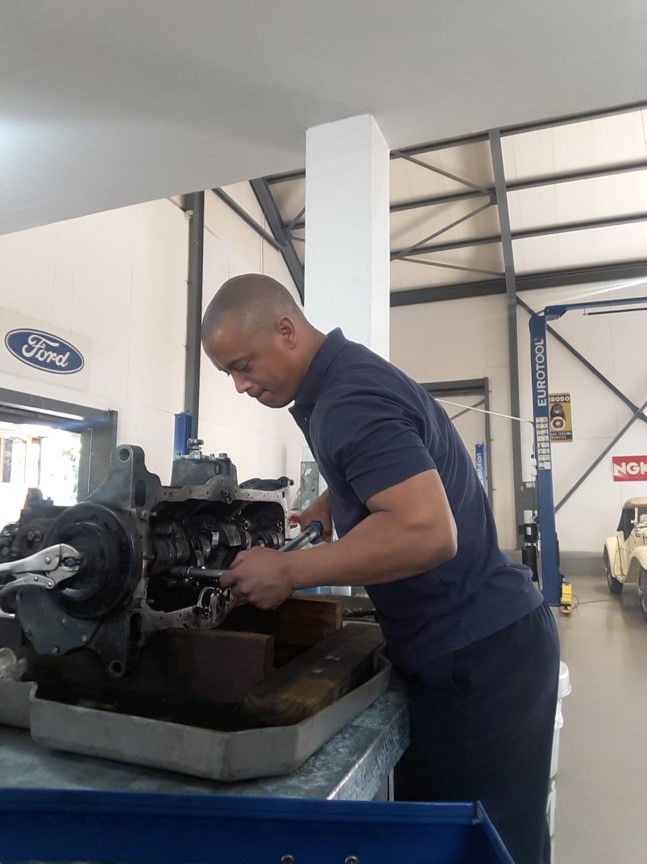
18 Dec Spanner Works: Wenstley Wicomb
A new, regular feature outlining the activities of FMM’s workshop personnel who are responsible for repairing, renovating, refurbishing and restoring the museum’s large collection of vehicles. This month we feature Wenstley Wicomb and how he set about making an 81-year-old Mercedes-Benz get up and go….
FMM’s 1939 Mercedes-Benz 230 Cabriolet is special for a variety of reasons. It has beautiful classic lines, a powerful six-cylinder engine and it first appeared the same year World War Two started. The museum’s example has immaculate bodywork, but the engine had seized. It was found that water had been seeping into the cylinder bores causing the piston rings to rust onto the cylinder liners, so after two weeks of dosing the cylinder bores with various secret substances, the repair process began.
“Just Kidding,” says Wenstley. “There are various opinions on what to use to get the engine to turn, but patience and vinegar did the trick for me.” After an in-depth inspection, including the removal of the sump and inspection of the big-end bearings, it was decided that the engine needed to be taken out. For ease of access, the radiator was removed so that the entire engine and gearbox assembly could be removed. “Everything was then disassembled and cleaned to better assess the damage and find out which parts could be re-used and which needed to be replaced. As FMM is a museum, a concerted effort is always made to keep as many original parts as possible.
“All the pistons were moving freely except for number one, so I decided to use a bit more force. Eventually the piston budged, but at the cost of breaking the rings. Fortunately, museum curator Wayne Harley found a spare set of near-suitable rings on the shelf of new/old stock parts stored in the workshop mezzanine. The cylinder head and block were sent to a local engineering shop for the usual treatment. Although, with machinery this old, it’s never really ‘just the usual treatment’…”
Cylinder number one had to be re-sleeved, while the other bores only needed a good hone. The engineering shop also made up a new cylinder-head gasket to match the block. “You don’t want to see the look on the local motor spares shop employee’s face if you had to ask him or her for an 81-year-old car’s head gasket. ‘VIN, asseblief?’” adds Wenstley with a grin.
“With all the parts cleaned, machined and prepared for the rebuild, it was just up to me to follow the procedures. Under the watchful eye of my colleague, Donny, and with workshop manager Lorenzo Farella lending an experienced hand, reassembly of the engine commenced. Once this task was completed, bolts torqued and initial clearances set, it was time to mate the engine with the gearbox. The flywheel had been skimmed before reassembly and the clutch was still in good condition, so was re-used.
The time had arrived for the drivetrain to be fitted back into the car, and with a few extra helping hands, it was no problem. The carburettor was then given some attention to get it back in tip-top shape. And the rusted fuel tank was sent to an artisan to be copied exactly as original. Once everything was back in place, the Mercedes-Benz was fired up and driven again for the first time in many years.
“I’m very happy to have revived and revved-up this engine for the first time since the museum took ownership,” says Wenstley. “It sure was a great feeling.”
Visitor note: The Mercedes-Benz 230 Cabriolet is currently on display in Hall B.



